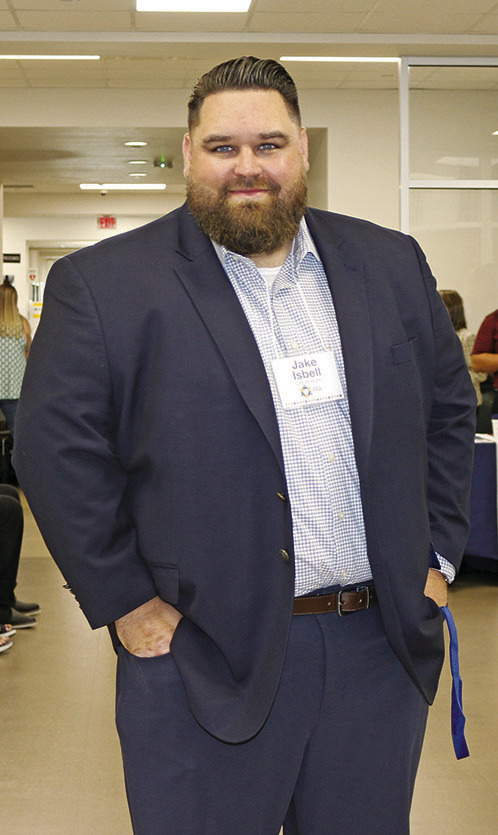HUTTO – In a city’s emergency preparedness, the adage “failing to plan is planning to fail” holds true with disastrous results.
After the lessons learned when Winter Storm Yuri swept through the area in 2021, Hutto realized the need for better emergency response systems and established an emergency management department. On Monday the department held the first Hutto Strong Summit, a disaster response and recovery conference aimed at increasing the preparedness of local businesses as well as non-profit, faith-based and community organizations.
“Community resilience is really rooted in how well stakeholder relationships coordinate during times of disaster and during times of recovery from disaster,” said Emergency Management Director Jake Isbell. “So the whole idea of this summit is to allow community agencies to get some training and information on their own organizational preparedness. You can’t help the community when your organization is recovering itself.”
Isbell said about 70 people attended the day-long event on May 21 at the Texas State Technical College campus, 1600 Innovation Boulevard, as well as about a dozen community partners who set up informational tables.
Laura Wells, executive director for the Hutto Resource Center, said she hoped to let people know more about the role of HRC in the community.

“This is all about community coming together and talking about how we can best support Hutto in times of normalcy and times of disaster, and that’s what the HRC is all about,” Wells said.
HRC is known for its yearround food pantry, utility bill assistance and services to support older community members. The network that provides those services helps HRC be ready when disaster strikes as well.
Wells said that when the tornado hit Round Rock in March 2022, HRC cooked a hot meal for those displaced. Many told her they had not had a hot meal in several days. The agency also helped those on limited budgets pay insurance deductibles for home repairs and connected community members to other resources.
“We’re stronger together. Connecting all the various resources so we’re more aware of who has what means we can better form a plan so that when something does happen, whether its a tornado or whatever, we’re better able to assist our community,” she said.
Mayor Mike Snyder said the summit was an effort to get everybody on the same page so the community would be more prepared in case of disaster.
“This really all kind of stems from (Winter Storm Yuri) and the aftermath from that. What are some things we could learn from it, where did we fail – a lot of it was communication and overall preparedness for things that came up,” Snyder said. “Right now you’ve got protocols written by one group, assuming the other groups are going to do other things. This will help us know everybody’s roles and responsibilities.”
Isbell noted that Taylor established an umbrella organization to oversee disaster preparedness, known as a Community Organizations Active in Disaster group. The COAD coordinates disaster response and recovery activities across all the community partners who have a role in emergency management. One of his goals in establishing the summit was to lay the foundation for Hutto to create a COAD as well.
Thomas Martinez, chair of the Greater Taylor COAD, led a session at the conference to inform attendees about how a COAD works.
“We are an organization that will fill the gaps whenever there is a disaster. When a disaster happens it takes a few days for the Red Cross to show up and help, anywhere from 48 hours to 72 hours or longer so we wanted to create something in Taylor that will fill that gap. We want to be able to act and react to the needs of the community,” Martinez said.
Alan McMillin of the American Red Cross was also on hand to be part of the coordination effort. The agency has experience in helping local organizations prepare for disaster.
“We coordinate in elements of planning for disaster preparedness, response and recovery,” said McMillin. “Every organization should have an emergency plan and what we’re going to do today is educate the organizations that show up here.”
The American Red Cross has a free program businesses and organizations can use to assess and improve their disaster recovery capabilities. Learn more at ReadyRating.org.
Disaster recovery doesn’t end with restoring power and infrastructure for the community. It also means getting people back to work. Isbell said that a significant number of small businesses do not survive after a disaster, and many struggle for a couple of years before going under.
“One of the main things about businesses after disaster is the safety of their people. Do they have a system on how to check in with their employees? Do they have a continuity plan on how to remain open during those times or get back open quickly after a response has happened?” Isbell said.
Some of the workshops at the summit included resources to take businesses step-by-step through creating a disaster plan. Isbell provided a link to a free emergency planning resource tool for businesses: beforeduringafter.txst.edu.
“Hutto is already a resilient, strong community that looks out for itself and its neighbors,” Isbell said. “Now we’re taking the next step on how to coordinate all that so that it’s a little more organized. That’s what we hope for in this event, to lay that foundation.”








